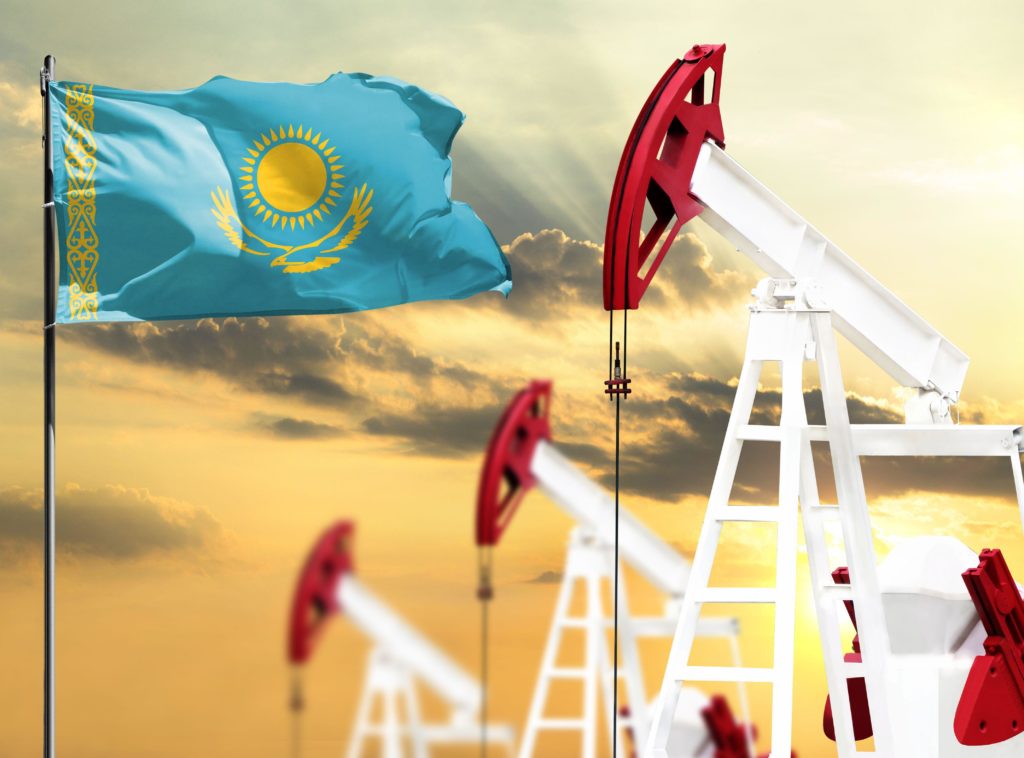NUR-SULTAN
Kazakhstan will increase oil production from August, steadily adding volumes each month as OPEC+ participants agreed on a gradual rise in oil output.
Last week, the participants in the OPEC+ deal agreed on a gradual increase in oil production from August, ending discussions that lasted around three weeks due to a confrontation between the UAE and Saudi Arabia.
As the COVID-19 pandemic disrupted production as well as demand for oil, OPEC+, a group of the Organisation of the Petroleum Exporting Countries (OPEC) and allied producers of which ex-Soviet Russia, Azerbaijan and Kazakhstan are members, cut output by a little more than 7 million barrels per day (bpd) to support prices and reduce oversupply. Earlier this year, members of the group agreed to ease cuts gradually by 350,000 bpd in May, another 350,000 bpd in June and around 450,000 bpd in July.
The cartel have now decided to increase production by a cumulative 400,000 bpd every month starting in August until it reaches the same production levels seen at the end of 2019. The ministers also agreed to extend their original agreement until the end of 2022 from an initially agreed date of April.
Kazakhstan will increase oil production to 1.491 million bpd from August, adding 16,000 barrels every month, Nurlan Nogaev, the country’s energy minister, said, commenting on the ministerial meeting of OPEC+ countries.
Kazakhstan, which has been advocating for the increased production quotas, has produced 1.465 million bpd of oil in June against the planned 1.469 million bpd. It plans to produce 1.475 million bpd in July. The Central Asian country expects to produce 85.3 million tonnes of oil in 2021.
Kazakhstan produced 35.5 million tonnes of oil and gas condensate in the first five months of 2021, exceeding the target set under its OPEC+ deal by 0.7 percent.
Oil production declined 7.8 percent year-on-year, a drop that was caused by unscheduled repair work in May at the Karachaganak field, the most significant of which was technical work carried out on the gas re-injection compressor. Kazakhstan exported 28 million tonnes of oil in January-May.
Kazakhstan was scheduled to increase its oil output gradually from May under a deal agreed in April at a ministerial meeting of the OPEC+. However, repair works at some of Kazakhstan’s biggest oil fields means that production is expected to decline, compensating for the country slightly exceeding its OPEC+ target in the first few months of the year.
The energy minister said in April that any slight deviation from OPEC+ commitments would be compensated for by the major repair works due in the summer.
Maintenance work is planned on a major Tengiz oil field in August-September, resulting in a 50 percent decline in oil production on the field. The overhaul will last for about a month and a half.
Oil production on Tengiz was 11.4 million tonnes in January-May.
The Tengiz field is operated by the Tengizchevroil, a consortium led by U.S. oil group Chevron. It also includes the U.S. Exxon Mobil, Russia’s LUKOIL and Kazakhstan’s state energy firm KazMunayGaz.
Kazakhstan has two other major oil and gas condensate fields, Kashagan and Karachaganak. Oil output in Kashagan was 6.2 million tonnes from January to May, and 5 million tonnes in Karachaganak in the same period.
The Kashagan field is operated by an international consortium led by the North Caspian Operating Company. Other partners include Eni, Exxon Mobil, CNPC, Royal Dutch Shell, Total, Inpex and KazMunayGaz. The Karachaganak gas condensate field in northwest Kazakhstan is jointly operated by Eni and Shell. Other shareholders in the project are KazMunayGaz, Chevron and LUKOIL.

